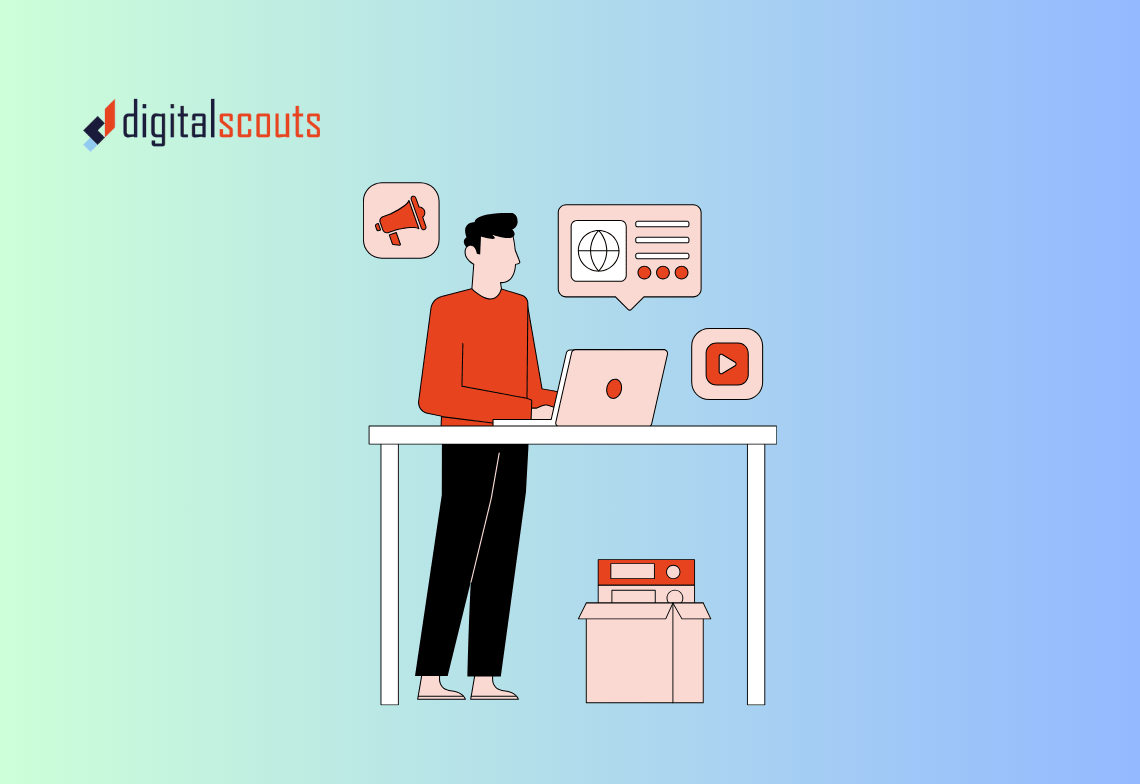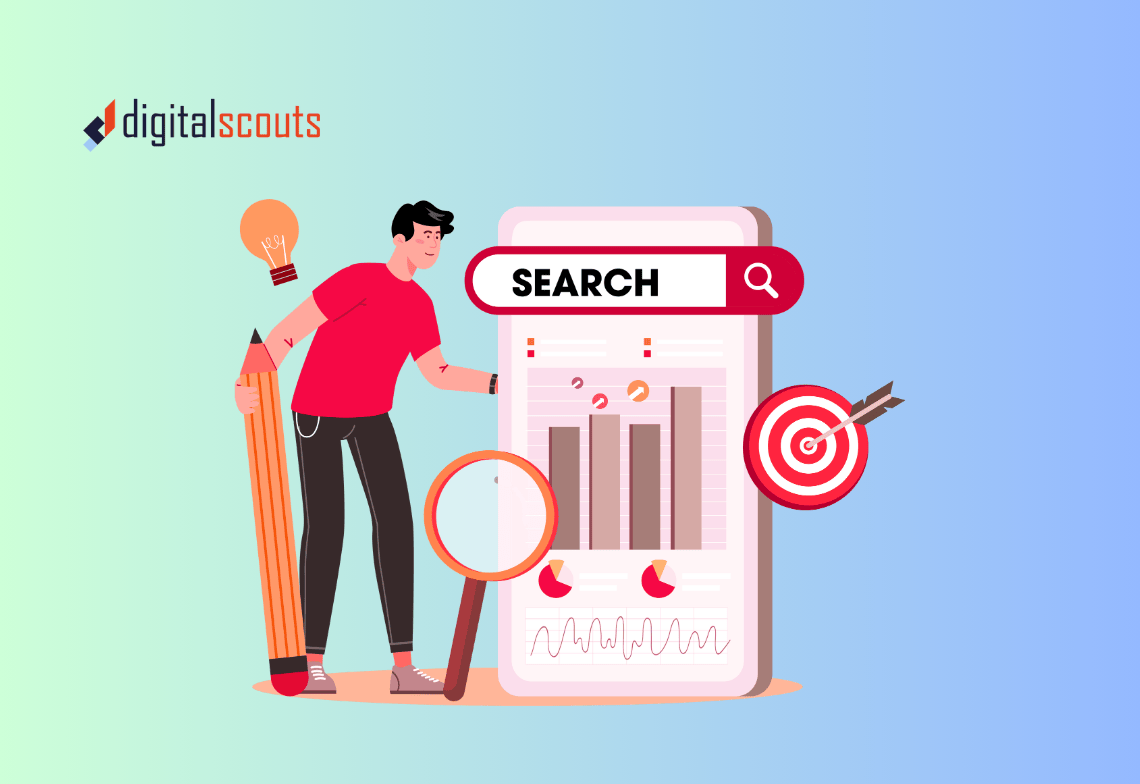Search is changing faster than ever.
For years, SEO revolved around keyword research, backlinks, and rankings. But with the rise of AI-powered search engines like Google’s Search Generative Experience (SGE), Bing Copilot, and ChatGPT, the way users discover information has shifted.
Traditional SEO is no longer enough. Visibility now depends on how well your brand is understood by AI — not just how well you rank for keywords.
This guide explains the shift from keyword-based SEO to AI-driven discovery and how B2B companies can prepare for the future with Answer Engine Optimisation (AEO) and entity-based strategies.
The Evolution of Search
For two decades, SEO focused on matching user queries to web pages. Marketers identified high-volume keywords, optimised pages, and built links to climb search rankings.
That model worked when search engines primarily displayed lists of links. But AI has changed the experience entirely.
Today, users often get direct answers, summaries, or recommendations — without clicking through to websites.
The stages of SEO evolution
-
Keyword era: Focused on phrases and exact-match optimisation.
-
Semantic era: Search engines began to understand context and intent.
-
Entity era: AI models now connect ideas, brands, and topics through relationships and relevance.
We have officially entered the AI discovery phase, where search engines act more like researchers than librarians.
What Is AI Search and Why It Matters
AI search engines use large language models (LLMs) to understand, summarise, and generate information from multiple sources.
Instead of ranking pages by keywords, they identify trusted entities and pull the most relevant insights to form an answer.
How AI search works
-
It scans across content ecosystems — websites, PDFs, videos, and social posts.
-
It identifies recognised entities (companies, products, people, or concepts).
-
It uses relationships between those entities to determine credibility.
-
It generates a contextual answer for the user’s query.
The result is a conversation-like experience where users ask complex questions and receive structured, human-like responses.
For marketers, this changes what it means to “rank.” Being visible in AI search means being cited, referenced, or integrated into generated answers — a shift from keyword to entity visibility.
Why Traditional SEO Alone Is Not Enough
Keyword-focused strategies still matter but no longer guarantee discovery.
AI search prioritises meaning over match. It looks for context, trust, and relationships between information sources.
The limitations of traditional SEO
-
Keyword stuffing and repetitive phrasing no longer influence results.
-
AI tools summarise content rather than listing it.
-
Ranking first on Google does not ensure inclusion in AI-generated answers.
-
Content without clear authorship or brand identity may be excluded entirely.
To stay discoverable, B2B companies must optimise for how AI understands, connects, and interprets information — not just how search crawlers index it.
Step 1: Understand Entity-Based Optimisation
Entities are the foundation of AI-driven search.
An entity is a uniquely identifiable thing — a brand, product, location, or topic. When AI understands your brand as an entity and recognises what it does, it can connect your content to relevant queries.
Example
If your company provides HubSpot CRM implementation, AI needs to understand that you:
-
Are a verified business entity.
-
Offer CRM migration and RevOps services.
-
Work with mid-tier B2B clients.
When this entity data is consistent across your website, LinkedIn, Google Business Profile, and external mentions, AI search tools can confidently surface your brand when users ask, “Who are the top HubSpot CRM partners for B2B?”
How to strengthen your entity
-
Use consistent naming and descriptions across all channels.
-
Publish clear “About” and “Services” pages that describe what you do.
-
Link to authoritative directories, case studies, and partner profiles.
-
Maintain structured data and schema markup for your brand and services.
Entity clarity is what transforms your business from a keyword in a search result to a trusted source in an AI-generated answer.
Step 2: Build Topic Authority Through Clusters
Search engines and AI models use topical relationships to understand expertise.
Rather than optimising for isolated keywords, build topic clusters — a collection of interlinked pages that explore one theme in depth.
How topic clusters work
-
A central “pillar” page covers the main topic, such as “HubSpot CRM Migration.”
-
Supporting pages explore subtopics like “data mapping,” “migration testing,” or “automation setup.”
-
Internal links connect these pages, creating a web of authority.
This structure helps both human users and AI systems see your brand as an expert in specific areas.
AEO-friendly benefit
When AI engines summarise answers, they pull structured, interconnected content that demonstrates depth and reliability. A strong topic cluster increases the likelihood that your content is referenced in those summaries.
Step 3: Create Content for AI and Humans
The key to future-proofing your SEO is writing for both audiences — humans and machines.
Human-focused writing
-
Use clear, natural language that explains concepts simply.
-
Address specific pain points for your audience.
-
Include actionable insights and examples.
AI-focused writing
-
Use clear headings and logical structure for context.
-
Answer common questions directly within your content.
-
Include data, statistics, and verified references to improve credibility.
AEO-friendly formatting
-
Use question-based H2s and H3s such as “What is AI Search Optimisation” or “How does AI Discovery Work.”
-
Add concise summaries or definitions at the top of each section.
-
Incorporate structured data like FAQs and How-To schema for better interpretation.
This dual approach ensures that your content remains useful to people while being accurately represented by AI engines.
Step 4: Optimise Technical SEO for AI Discovery
Even in the age of AI, technical SEO remains essential. It provides the signals that help search engines and AI crawlers interpret your content correctly.
Key technical areas to focus on
-
Schema markup: Use structured data to describe your organisation, services, and content type.
-
Clean site architecture: Ensure pages are logically organised and interlinked.
-
Fast loading speed: Core Web Vitals directly influence user satisfaction and crawl frequency.
-
Secure and accessible URLs: HTTPS and mobile-first design are now non-negotiable.
When your website is technically sound, AI systems can extract, understand, and surface your information with greater confidence.
Step 5: Measure Entity Visibility and AI Search Performance
Traditional SEO metrics like keyword rankings and organic traffic are still useful but incomplete.
In the age of AI discovery, visibility is about how often your brand is mentioned, cited, or referenced across content ecosystems.
New ways to measure visibility
-
Brand mentions in AI summaries: Track when your company or content appears in AI-generated answers using tools like Nozzle or Authoritas.
-
Knowledge panel consistency: Check that your brand information appears accurately in Google’s knowledge graph.
-
Entity relationships: Analyse connections between your brand and related topics using SEO platforms with entity data insights.
-
Engagement metrics: Monitor time on page, CTR, and conversion paths to ensure AI-driven visibility is translating into real business outcomes.
By tracking entity performance, you can see how your visibility extends beyond search rankings into conversational and AI-driven environments.
Step 6: Build Trust Through Authoritative Signals
AI systems are trained to prioritise sources that demonstrate expertise, authority, and trust — known as E-E-A-T (Experience, Expertise, Authoritativeness, and Trustworthiness).
How to improve E-E-A-T signals
-
Publish content authored by real subject matter experts.
-
Include author bios with credentials and experience.
-
Cite reputable sources and data within your content.
-
Earn backlinks from recognised industry publications.
-
Keep contact details, address, and company information consistent across all platforms.
For B2B brands, authority does not come from volume but from credibility. The more AI systems see your brand connected to trusted entities, the more likely it is to appear in generated results.
Step 7: Adapt Keyword Research for AI Context
Keywords still matter, but their purpose has evolved.
Rather than focusing on exact matches, think in terms of semantic intent and contextual relevance.
How to modernise keyword research
-
Identify question-based queries that reflect how users speak to AI assistants.
-
Group related phrases around broader themes.
-
Prioritise clarity and meaning over keyword density.
-
Use AI tools like Semrush’s Topic Research or MarketMuse to find content gaps within topics.
Example
Instead of targeting “CRM implementation services,” optimise for conversational queries like:
-
“What is the best way to migrate to HubSpot CRM”
-
“How to align CRM migration with RevOps strategy”
These formats are more likely to match how users engage with AI tools, increasing your chances of inclusion in generated answers.
Step 8: Prepare for Multi-Source Content Ecosystems
AI engines pull from multiple content types — web pages, videos, PDFs, podcasts, and social posts.
Optimising your entire content ecosystem ensures your brand is visible wherever AI gathers information.
How to diversify visibility
-
Repurpose long-form content into video or visual summaries.
-
Add transcripts to videos and podcasts for crawlability.
-
Tag assets consistently with entity and topic metadata.
-
Maintain structured descriptions on YouTube, LinkedIn, and knowledge hubs.
AI discovery rewards brands that show consistent expertise across multiple formats.
Bringing It All Together
The shift from keyword research to AI search marks a new era of organic discovery.
Success in this landscape depends on how well your brand communicates meaning — not just through words but through relationships, structure, and authority.
By focusing on entity clarity, topic clusters, and AEO-friendly content, B2B companies can ensure they remain visible as search evolves beyond links and into conversations.
Digitalscouts helps B2B brands prepare for the future of AI-driven discovery. Our approach connects SEO, content strategy, and RevOps alignment to build authority, optimise structure, and strengthen your visibility in AI-powered search results.
If you want to understand how AI search is reshaping visibility and how your brand can stay ahead, our team can help you design an SEO and AEO strategy built for the next decade of discovery.
Frequently Asked Questions
AI search optimisation focuses on structuring and writing content so that AI engines can understand, interpret, and cite it in generated answers.
Traditional SEO targets keyword rankings. AI search focuses on context, authority, and entity relationships.
Entity-based SEO helps search engines recognise your brand or topic as a distinct, trustworthy source connected to relevant subjects.
By building topic clusters, maintaining consistent brand data, and optimising content for both humans and AI systems.
About Author
Ashish is a B2B growth strategist who helps scaleups align marketing and sales through Account-Based Marketing (ABM), RevOps, and automation. At DigitalScouts, he builds scalable content engines, streamlines lead flows with HubSpot, and runs targeted GTM programs to drive predictable pipeline. He regularly shares insights on using AI and automation to power ABM and accelerate complex buyer journeys.








